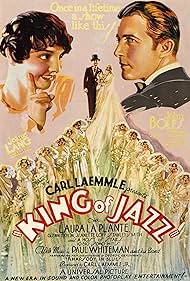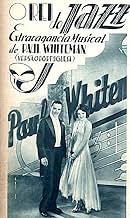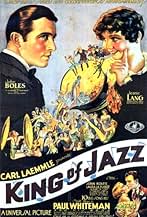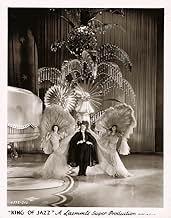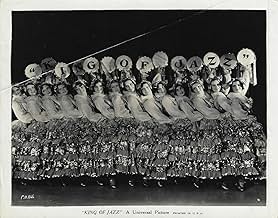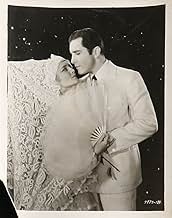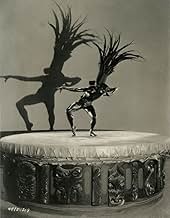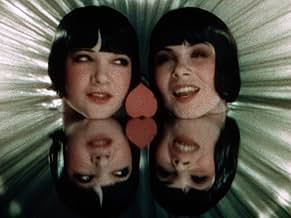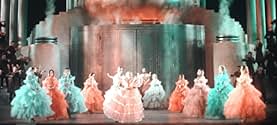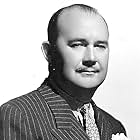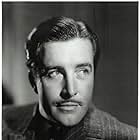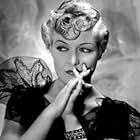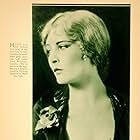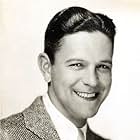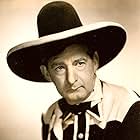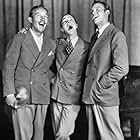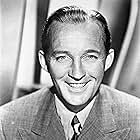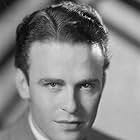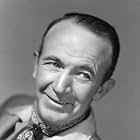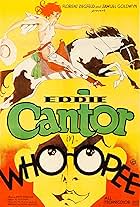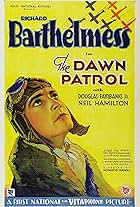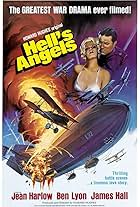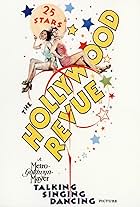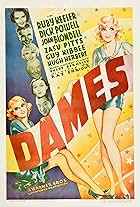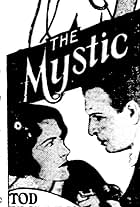IMDb RATING
6.7/10
1.7K
YOUR RATING
A rotund bandleader leads a series of theatrical sketches, dance numbers, special effects, and animated segments.A rotund bandleader leads a series of theatrical sketches, dance numbers, special effects, and animated segments.A rotund bandleader leads a series of theatrical sketches, dance numbers, special effects, and animated segments.
- Won 1 Oscar
- 2 wins total
Harry Barris
- One of the Rhythm Boys
- (as The Rhythm Boys)
Bing Crosby
- One of the Rhythm Boys
- (as The Rhythm Boys)
Al Rinker
- One of the Rhythm Boys
- (as The Rhythm Boys)
Carla Laemmle
- Chorine
- (as Beth Laemmle)
- Directors
- Writers
- All cast & crew
- Production, box office & more at IMDbPro
Storyline
Did you know
- TriviaThe animation sequence, created by Walter Lantz, was the first Technicolor animation ever produced.
- GoofsWhiteman's six violinists are introduced playing in two rows of 3's. Then without missing a beat, they are suddenly seen in an overhead shot playing in a circle.
- Quotes
Announcer: You don't mean to tell me that you are well-versed in the intricacies of the art of Terpsichore?
Paul Whiteman: No, but I can dance.
- Alternate versionsRestored in 2016 with a running time of 99 minutes. This version replicates the scene continuity of the 1930 release version, including about a minute of exit music. A small amount of footage was not found and is covered by still photographs. This is the version that played at the Museum of Modern Art and Film Forum in 2016, and was released by the Criterion Collection on Blu-ray and DVD in 2018.
- ConnectionsFeatured in The All Talking, All Singing, All Dancing Show (1973)
- SoundtracksRhapsody in Blue
(uncredited)
Music by George Gershwin
Played briefly during the opening credits
Played by Paul Whiteman and Orchestra (as "The Paul Whiteman Orchestra") during the production number
Performed by Roy Bargy (piano)
Danced by Jacques Cartier with clarinet, along with the Russell Markert Girls and The Sisters G
Featured review
THE KING OF JAZZ (Universal, 1930), directed by John Murray Anderson, is the fourth and final of Hollywood's all star musical revues during the 1929-30 season, and ranks the most impressive of the four, outdoing MGM's THE Hollywood REVUE OF 1929 (1929); Warners THE SHOW OF SHOWS (1929) and PARAMOUNT ON PARADE (1930). Filmed in early two-strip Technicolor, it is fortunate to have survived after all these years considering how many early color movies are either lost or have survived in black-and-white format only. The title character goes to band-leader, Paul Whiteman, in his feature movie debut, but THE KING OF JAZZ is remembered today as the motion picture debut of Bing Crosby, who, in reality, mainly appears as part of the Rhythm Boys in some musical skits.
Virtually plotless, the revue begins with Crosby's off-screen vocalizing of "Music Hath Charms" during the opening credits. This is followed by Charles Irwin standing in as master of ceremonies who tells how Paul Whiteman became crowned "The King of Jazz." A cartoon segment follows (compliments of Walter Lantz, the creator of Woody Woodpecker), showing Whiteman himself hunting in darkest Africa being chased by a lion, to then sooth the savage beast by violin playing to the tune, "Music Hath Charms". After an elephant squirts water through its trunk on a monkey up a tree, the angry monkey throws a coconut towards the elephant, which, in turn, hits Whiteman's head, bumping it into the form of a crown. Then comes the introduction of the Paul Whiteman Band, presenting themselves individually playing tunes with their instruments. Production numbers and comedy skits follow. The most striking numbers are: "The Bridal Veil" the ten minute spectacle of Whiteman conducting his orchestra to George Gershwin's "Rhapsody in Blue," and the "Happy Feet" number, sung by The Sisters "G", with chorus girls descending onto a large-scale miniature of New York City, highlighted by the eccentric rubber-legged dancing by Al Norman.
Other songs presented include: "The Lord Delivered Daniel" (sung by the cartoonish Paul Whiteman) "Mississippi Mud" and "So the Bluebirds and the Blackbirds Got Together" (both sung by The Rhythm Boys: Bing Crosby, Harry Barris and Al Rinker); "It Happened in Monterey" (sung by John Boles); "Oh, How I Would Like to Own a Fish Store" (sung by Jack White); "A Bench in the Park" (sung by Glenn Tryon and Laura LaPlante, The Brox Sisters and the Rhythm Boys); "Ragamuffin Romeo" (sung by Jeanie Lang); "I Like to Do Things for You" (sung by Jeanie Lang to Paul Whiteman; Grace Hayes and William Kent; danced by Tommy Atkins Sextette with Nell O'Day); "Has Anyone Here Seen Nellie?" (sung by Churchill Ross, John Arledge, Frank Leslie and Walter Brennan with his wriggling ear); "The Song of the Dawn" (sung by John Boles); and the finale, "The Melting Pot Medley." Brief comedy skits include THE DAILY MEOW with Laura LaPlante, Jeanie Lang, Merna Kennedy, Grace Hayes and Kathryn Crawford; IN CONFERENCE with Glenn Tryon, Laura LaPlante and Merna Kennedy; SPRING TIME with Slim Summerville, Yola d'Avril and Walter Brennan; ALL NOISY ON THE EASTERN FRONT with Yola d'Avril, Slim Summerville, Walter Brennan, others; FOREVER MORE with William Kent as the drunk, and Walter Brennan as the butler; the risqué, A MEETING WITH FATHER with Slim Summerville meeting his future father-in-law (Otis Harlan) and how he feels about his bride-to-be, and so much more. There's also Joe Venito playing his wild violin to the tune, "Pop Goes the Weasal."
Unseen for many years, THE KING OF JAZZ was presented on television during the early years of cable TV circa 1984, and soon after distributed on video cassette, compliments of MCA/Universal with excellent visuals. For a while, THE KING OF JAZZ did enjoy frequent revivals on American Movie Classics (1989-1990) before color restoration and edited skits restored on DVD in 2018, the same 97 minute edition broadcast March 4, 2019, on Turner Classic Movies.
The biggest surprise about this revue is that it was released by Universal, the studio not known for lavish musicals. Aside from lavishness, it's quite advanced, especially with its camera angles/techniques which remains impressive even today. The comedy skits might seem out of date, but are just a reminder as to what vaudeville was like and the humor that made its audiences chuckle back in the day. Even similar comedy skits of long ago are still being used today, especially by stand-up comics or on current TV shows that try to make old material fresh and original.
One final note: the special effects. Although not a first in early sound cinema, the early portion of the film where Paul Whiteman introduces his orchestra by opening his suitcase, from which many tiny musicians emerge in front of the life-size face of Whiteman as he watches from behind, then growing to normal size, is quite impressive, considering the time frame this was made. Remember, this wasn't done by computers as it would be today.
THE KING OF JAZZ has many bonuses to impress a first-time viewer. The production gets better with each passing comedy skit and musical numbers. And for die-hard Bing Crosby fans, even if the famous crooner doesn't have enough screen time to call his own, there's enough entertainment here performed by others to go around. (***)
Virtually plotless, the revue begins with Crosby's off-screen vocalizing of "Music Hath Charms" during the opening credits. This is followed by Charles Irwin standing in as master of ceremonies who tells how Paul Whiteman became crowned "The King of Jazz." A cartoon segment follows (compliments of Walter Lantz, the creator of Woody Woodpecker), showing Whiteman himself hunting in darkest Africa being chased by a lion, to then sooth the savage beast by violin playing to the tune, "Music Hath Charms". After an elephant squirts water through its trunk on a monkey up a tree, the angry monkey throws a coconut towards the elephant, which, in turn, hits Whiteman's head, bumping it into the form of a crown. Then comes the introduction of the Paul Whiteman Band, presenting themselves individually playing tunes with their instruments. Production numbers and comedy skits follow. The most striking numbers are: "The Bridal Veil" the ten minute spectacle of Whiteman conducting his orchestra to George Gershwin's "Rhapsody in Blue," and the "Happy Feet" number, sung by The Sisters "G", with chorus girls descending onto a large-scale miniature of New York City, highlighted by the eccentric rubber-legged dancing by Al Norman.
Other songs presented include: "The Lord Delivered Daniel" (sung by the cartoonish Paul Whiteman) "Mississippi Mud" and "So the Bluebirds and the Blackbirds Got Together" (both sung by The Rhythm Boys: Bing Crosby, Harry Barris and Al Rinker); "It Happened in Monterey" (sung by John Boles); "Oh, How I Would Like to Own a Fish Store" (sung by Jack White); "A Bench in the Park" (sung by Glenn Tryon and Laura LaPlante, The Brox Sisters and the Rhythm Boys); "Ragamuffin Romeo" (sung by Jeanie Lang); "I Like to Do Things for You" (sung by Jeanie Lang to Paul Whiteman; Grace Hayes and William Kent; danced by Tommy Atkins Sextette with Nell O'Day); "Has Anyone Here Seen Nellie?" (sung by Churchill Ross, John Arledge, Frank Leslie and Walter Brennan with his wriggling ear); "The Song of the Dawn" (sung by John Boles); and the finale, "The Melting Pot Medley." Brief comedy skits include THE DAILY MEOW with Laura LaPlante, Jeanie Lang, Merna Kennedy, Grace Hayes and Kathryn Crawford; IN CONFERENCE with Glenn Tryon, Laura LaPlante and Merna Kennedy; SPRING TIME with Slim Summerville, Yola d'Avril and Walter Brennan; ALL NOISY ON THE EASTERN FRONT with Yola d'Avril, Slim Summerville, Walter Brennan, others; FOREVER MORE with William Kent as the drunk, and Walter Brennan as the butler; the risqué, A MEETING WITH FATHER with Slim Summerville meeting his future father-in-law (Otis Harlan) and how he feels about his bride-to-be, and so much more. There's also Joe Venito playing his wild violin to the tune, "Pop Goes the Weasal."
Unseen for many years, THE KING OF JAZZ was presented on television during the early years of cable TV circa 1984, and soon after distributed on video cassette, compliments of MCA/Universal with excellent visuals. For a while, THE KING OF JAZZ did enjoy frequent revivals on American Movie Classics (1989-1990) before color restoration and edited skits restored on DVD in 2018, the same 97 minute edition broadcast March 4, 2019, on Turner Classic Movies.
The biggest surprise about this revue is that it was released by Universal, the studio not known for lavish musicals. Aside from lavishness, it's quite advanced, especially with its camera angles/techniques which remains impressive even today. The comedy skits might seem out of date, but are just a reminder as to what vaudeville was like and the humor that made its audiences chuckle back in the day. Even similar comedy skits of long ago are still being used today, especially by stand-up comics or on current TV shows that try to make old material fresh and original.
One final note: the special effects. Although not a first in early sound cinema, the early portion of the film where Paul Whiteman introduces his orchestra by opening his suitcase, from which many tiny musicians emerge in front of the life-size face of Whiteman as he watches from behind, then growing to normal size, is quite impressive, considering the time frame this was made. Remember, this wasn't done by computers as it would be today.
THE KING OF JAZZ has many bonuses to impress a first-time viewer. The production gets better with each passing comedy skit and musical numbers. And for die-hard Bing Crosby fans, even if the famous crooner doesn't have enough screen time to call his own, there's enough entertainment here performed by others to go around. (***)
- How long is King of Jazz?Powered by Alexa
Details
- Release date
- Country of origin
- Languages
- Also known as
- The King of Jazz Revue
- Filming locations
- Production company
- See more company credits at IMDbPro
Box office
- Budget
- $2,000,000 (estimated)
- Runtime1 hour 39 minutes
Contribute to this page
Suggest an edit or add missing content

